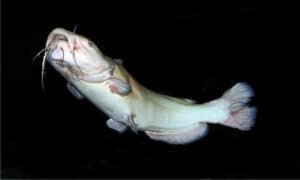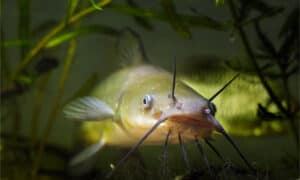There are unlimited fishing opportunities in Florida. Whether you are visiting for a weekend or staying for a few weeks, you won’t get bored looking for amazing fishing spots. The state is known for grouper, largemouth bass, spotted sea trout, and panfish. Anglers from all over the world travel to sunny Florida in hopes of catching large and rare fish. Brown bullhead catfish live in a variety of habitats, including Florida. Keep reading to learn about the largest brown bullhead ever caught in Florida and fun facts about the species.
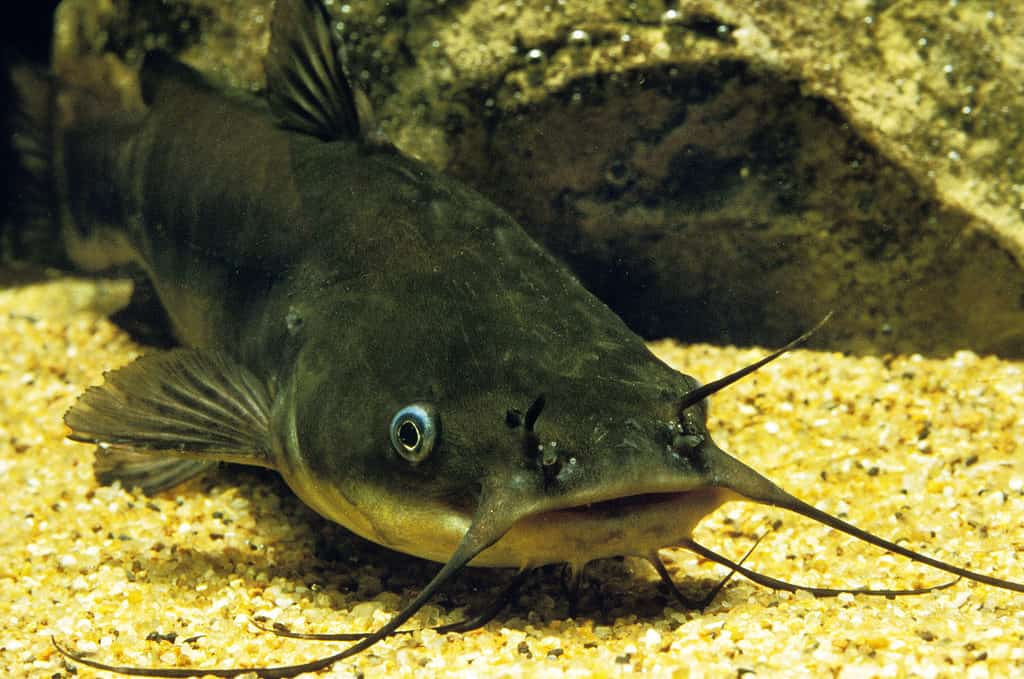
The Brown bullhead is a bullhead catfish species with unique markings. They also have many nicknames including mud cat, mud pout, and horned pout.
©Slowmotiongli/Shutterstock.com
About The Brown Bullhead
The Brown bullhead is a bullhead catfish species with unique markings. They also have many nicknames including mud cat, mud pout, and horned pout.
Size and Description
Typically, brown bullhead catfish reach 21 inches long. Brown bullheads also weigh about 1 pound, but they can weigh nearly 9 pounds. They are green, brown, and yellow. However, their bellies are off white. These unique fish also stand out because of the brown-black speckles across the surface of their bodies. Unlike other fish, the brown bullhead doesn’t have scales. Although they are scaleless, they have multiple fins including the adipose fin, anal fin, and abdominal pelvic fins. Juvenile and adult brown bullheads look slightly different since most juveniles are solid-colored.
Diet
Brown bullheads aren’t picky eaters, but they are mainly nocturnal feeders. These fish are omnivorous benthic bottom feeders. They eat fish eggs, algae, worms, leeches, crayfish, and some types of plants. Many anglers use corn as bait when hunting for brown bullheads. Brown bullhead catfish rely on their sensitive barbels when they hunt for food. This is because brown bullheads have poor eyesight.
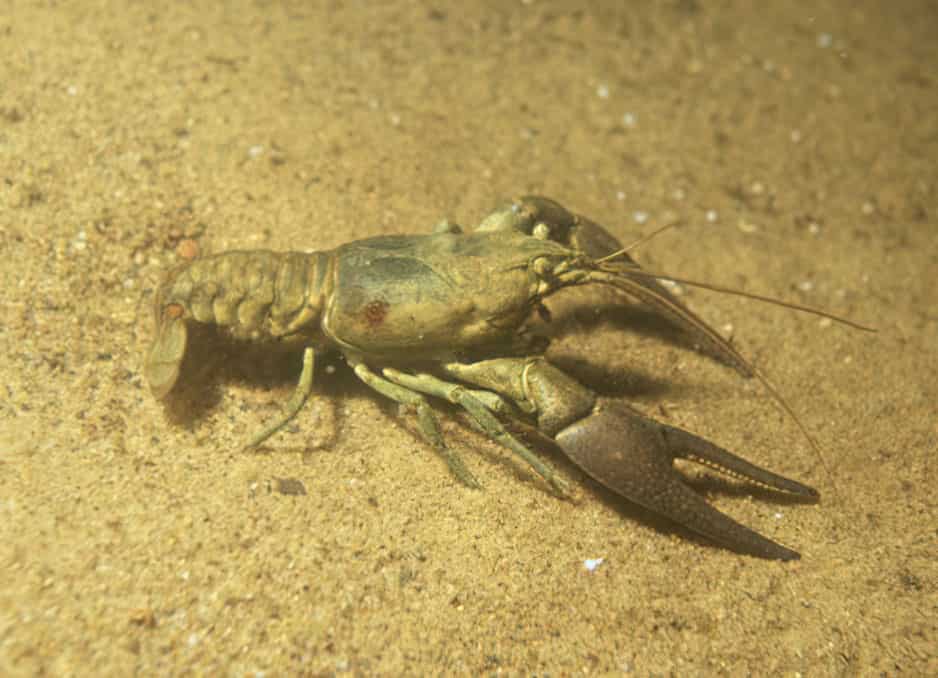
Crayfish are among the many things the brown bullhead eats.
©USFWS / public domain – License
Predators
Brown bullhead catfish have an even longer list of predators, compared to their prey. They aren’t very large animals, but they are most vulnerable as eggs. Their most common predators are water snakes, sunfish, turtles, northern pike, and green herons. Although some of these predators consume adult brown bullhead catfish, humans are the main predators. Interestingly, humans use brown bullhead catfishing for more than just fishing, including science and research. Brown bullheads aren’t defenseless though. When they feel threatened, these fish release venom as they stiffen their sharp spine.

Green herons are one of several predators of the brown bullhead.
©Gerry Matthews/Shutterstock.com
Distribution
Brown bullhead catfish are native to the Atlantic and Gulf Slope drainages. They are most often found in the Great Lakes and the Mississippi River basins. Although these fish are stocked worldwide for recreational and commercial fishing, they are only native to a small region. Brown bullhead catfish aren’t migratory fish and live in schools in their homes. They thrive in murky lakes, ponds, and drainage ditches since the murkiness helps them blend and hide. Brown bullheads also survive extreme weather, including the cold. They survive in heavily polluted waters with oxygen as low as 0.2 ppm.
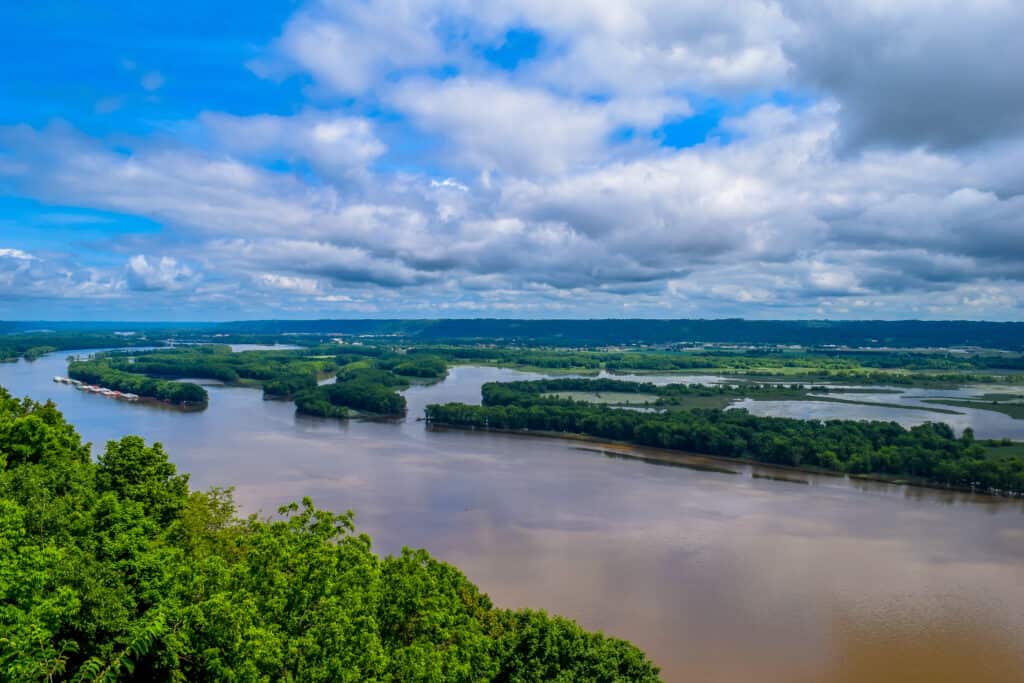
The brown bullhead calls the Mississippi River basin home.
©EyeTravel/Shutterstock.com
The Largest Brown Bullhead Ever Caught In Florida
On February 12, 2014, Richard A. Clinton caught Florida’s largest brown bullhead catfish in Lake Iola, Pasco County. The fish was 22.25 inches long with a girth of 15.5 inches. More impressively, it weighed 7.02 pounds. Meaning, it was just a few ounces shy of breaking the world record brown bullhead catch. Richard caught this record-breaking brown bullhead while crappie fishing with his cousin. Around 9:30 am, the fish surfaced and bit down on the bait. According to Richard, it fought hard and was a strong fish, surpassing his expectations. He beat the previous state record by over a pound. Robert Bengis caught the previous largest brown bullhead on Cedar Creek in Duval County. It weighed 5.72 pounds.

On February 12, 2014, Richard A. Clinton caught Florida’s largest brown bullhead catfish in Lake Iola, Pasco County.
©Brenda Miroslav/Shutterstock.com
The Largest Brown Bullhead Ever Caught In The World
Florida’s largest brown bullhead catfish almost made a new world record. Instead, the largest brown bullhead ever caught weighs 7 pounds and 6 ounces. This large fish was caught on Mahopac Lake, New York in 2009. Most brown bullheads in New York only weigh about 1 to 2 pounds.
Common Fish In Florida
Florida is a popular state for fishing, boating, kayaking, and other water-related activities, and it’s no wonder as to why. There are over 7,500 lakes, reservoirs, and ponds in the state. Before you travel to Florida and fish in one of the many lakes, know that a fishing license is required. Some of the most common freshwater fishes in Florida are:
- largemouth bass
- smallmouth bass
- bluegill
- bowfin
- Atlantic sturgeon
- black crappie
- spotted sunfish
- redear sunfish
- sunshine bass
- white bass
- butterfly peacock bass
- white catfish
- channel catfish
Where Is Lake Iola, Florida Located On A Map?
Lake Iola, in north-central Pascal County, is located in the southwest region of the state and is 45 minutes north of the city of Tampa and 13 minutes west of Dade City, close to Interstate 75. Florida is in the southeastern region of the United States and is bordered by Alabama to the northwest, Georgia to the north, the Gulf of Mexico to the west, and the Atlantic Ocean to the east.
The photo featured at the top of this post is © Rostislav Stefanek/Shutterstock.com
Thank you for reading! Have some feedback for us? Contact the AZ Animals editorial team.




